From nebulae and black holes to stellar nurseries and ancient collisions, the Universe has never been
"Pillars of Creation"
“Pillars of Creation” - “sculptures”of gas and dust, which is located approximately 6,500 light years from Earth in the Eagle Nebula and is located in the Milky Way galaxy. They have become famous since the Hubble Space Telescope photographed them in 1995. Studying them is very important to learn more about how stars are born and how they shape the space around them.
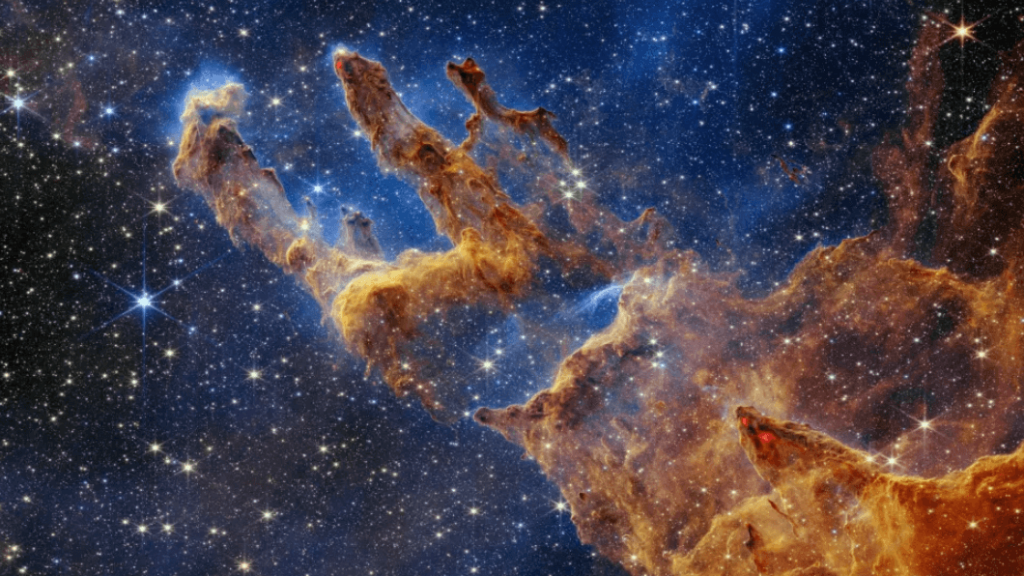 Photo: NASA, ESA, CSA, STScI; Joseph DePasquale (STScI), Anton M. Koekemoer (STScI), Alyssa Pagan (STScI)
Photo: NASA, ESA, CSA, STScI; Joseph DePasquale (STScI), Anton M. Koekemoer (STScI), Alyssa Pagan (STScI)
It is noteworthy that Webb photographed an object that no longer exists. Scientists believe that the “stops” were blown away by a nearby supernova.
Deep field "Webb"
Debut photograph of "James Webb" takenJuly 12, 2022, the deepest and most detailed image of the universe ever taken. In its center one can see a bright cluster of galaxies, as well as stars more than 13 billion light years away from Earth. And thousands of younger galaxies are in the background of the image.
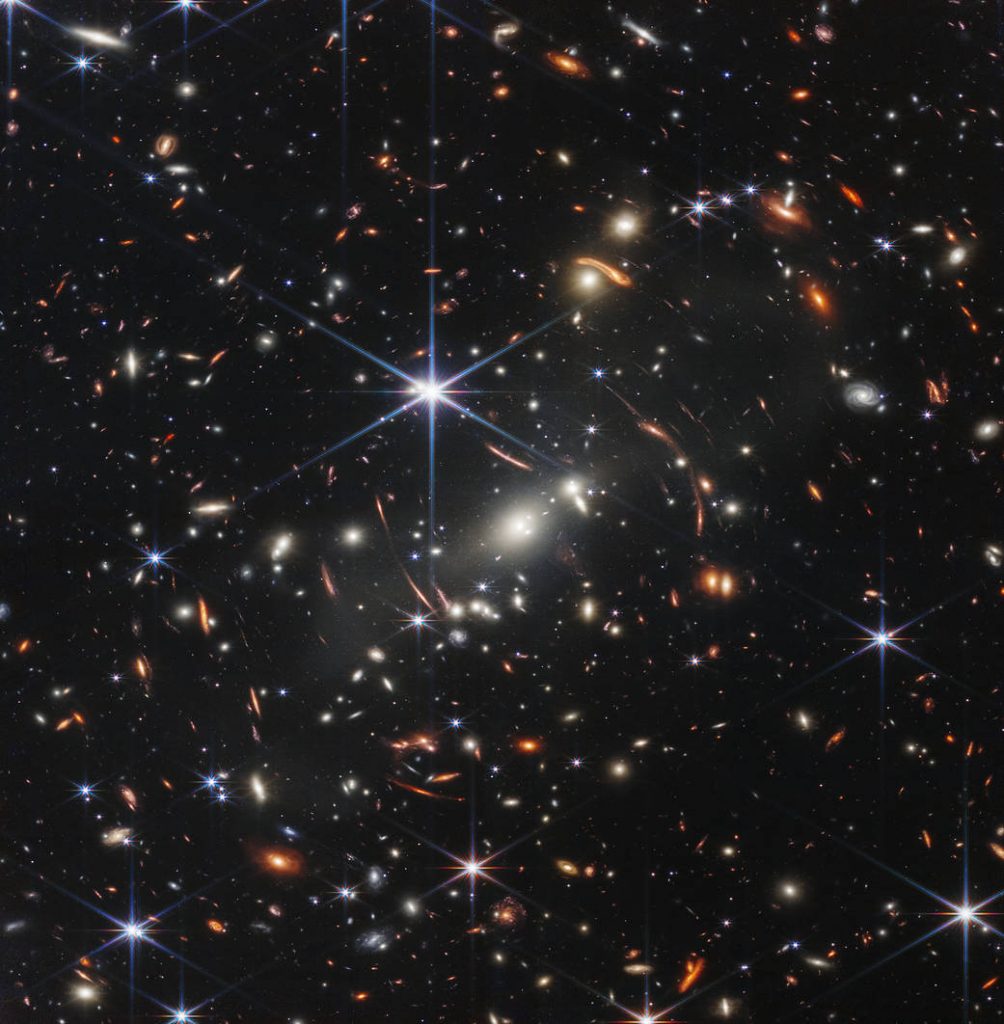 Photo: NASA, ESA, CSA, and STScI
Photo: NASA, ESA, CSA, and STScI
"Ghost Galaxy"
Like a nautilus shell, a "ghost galaxy"circling in space approximately 32 million light years from Earth. Thanks to Webb's instruments, the spiral arms of NGC 628 are clearly visible and outlined.
 Photo: ESA/Webb, NASA & C.S.A., J. Lee, and PHANGS-JWST Team; ESA/Hubble & NASA, R. Chandar. Acknowledgment: J. Schmidt
Photo: ESA/Webb, NASA & C.S.A., J. Lee, and PHANGS-JWST Team; ESA/Hubble & NASA, R. Chandar. Acknowledgment: J. Schmidt
It was called a “ghost” because other telescopes could not see the galaxy “well.”
Carina Nebula
One of the debut images of the James TelescopeWebb" - cosmic landscape of the Carina Nebula. It is located at a distance of approximately 7,600 light years from Earth. The nebula is illuminated by radiation from young stars, and this “hilly region” is one of the most active star-forming regions ever discovered.
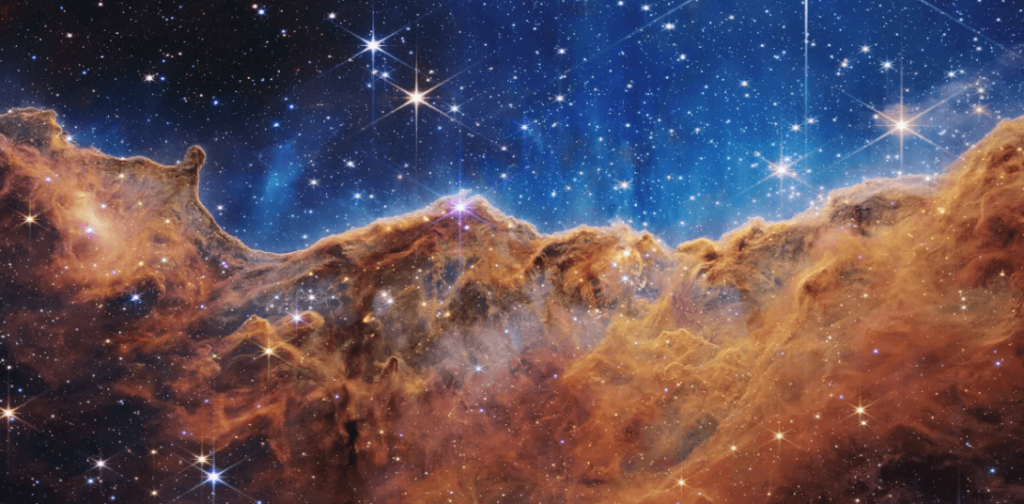 Photo: NASA, ESA, CSA, and STScI
Photo: NASA, ESA, CSA, and STScI
Stephen's Quintet
The Stefan Quintet is a group of fiveclosely connected galaxies located at a distance of 290 million light years in the constellation Pegasus. The photograph shows four close-knit galaxies flying past each other, almost colliding, slowly distorting and stretching the stars between themselves.
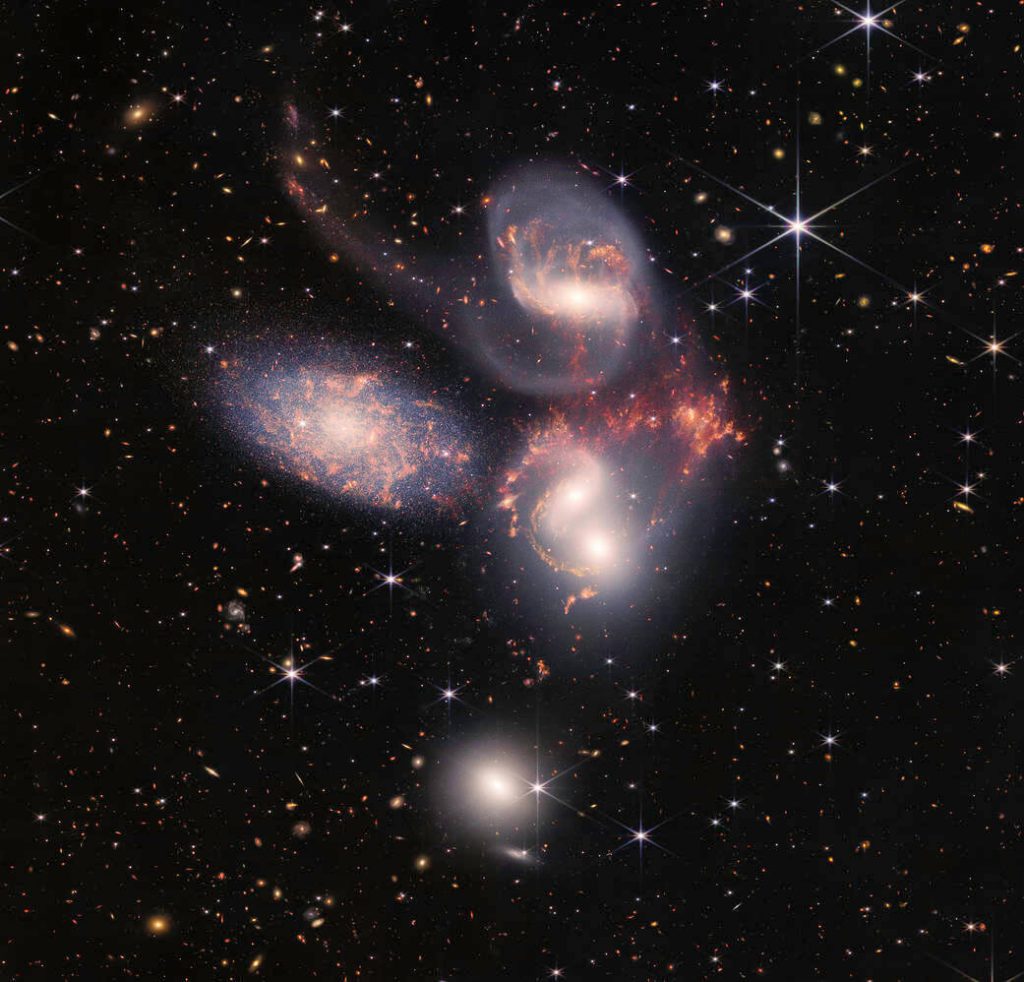 Photo: NASA, ESA, CSA, and STScI
Photo: NASA, ESA, CSA, and STScI
South Rim Nebula
South Rim Nebula, also known asThe "Eight Flare Nebula," due to its figure-eight shape, is a giant cloud of gas and dust ejected by a dying star about 2,500 light-years from Earth. James Webb photographed the stellar graveyard with two cameras, revealing more detail in the nebula's gaseous structures in the left image and a secret second star hiding in the center right.
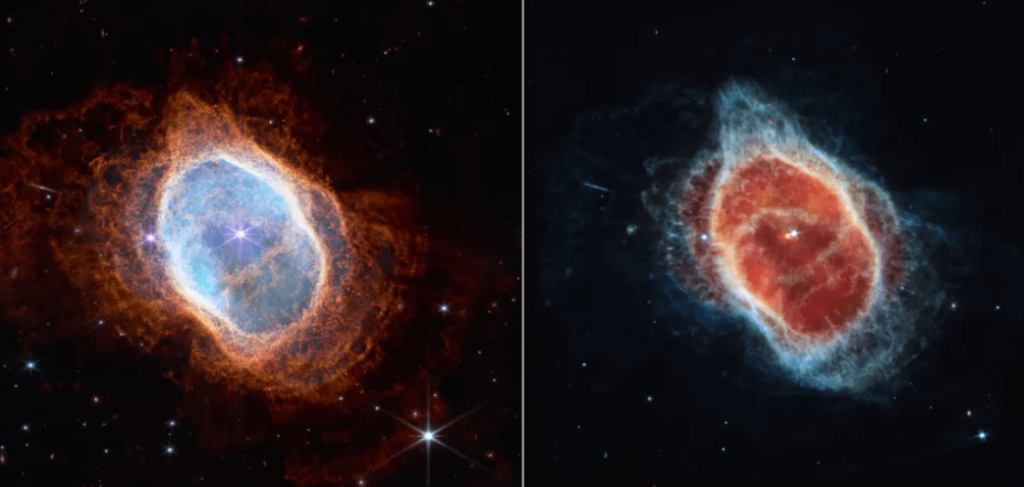 Photo: NASA, ESA, CSA and STScI
Photo: NASA, ESA, CSA and STScI
Cart Wheel
The Cartwheel spiral galaxy is locatedapproximately 500 light years from Earth. It probably once looked like the Milky Way, scientists say. However, a collision with a smaller galaxy in the past gave it a shape resembling a cartwheel.
 Photo: NASA, ESA, CSA, STScI
Photo: NASA, ESA, CSA, STScI
Ghost Rings of Neptune
Saturn is famous for its planetary rings,But the new James Webb image shows similar formations to Neptune, the eighth planet in the solar system. In the photo there are five rings of icy dust, which are rarely visible due to the fact that the object is so far from the Earth.
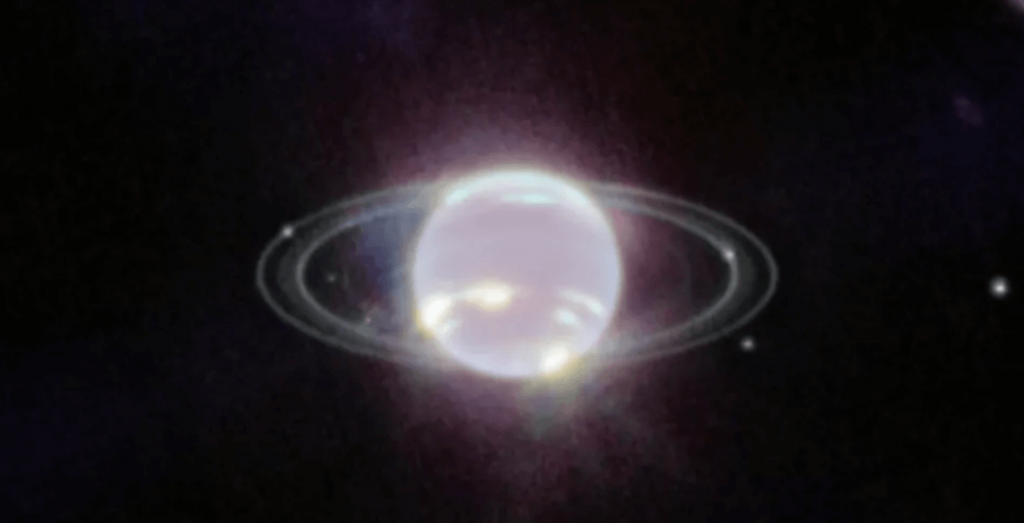 Photo: NASA, ESA, CSA and STScI
Photo: NASA, ESA, CSA and STScI
Tarantula Nebula
Stretching over 340 light yearsIn the cross-section, in the Webb photograph, the Tarantula Nebula seems to stretch with thin “legs” from the gas towards the cosmic cavity carved out by newborn stars.
 Photo: NASA, ESA
Photo: NASA, ESA
space collision
This photo of "Webb" shows the coupleColliding galaxies, named IC1623, crash into each other, triggering a burst of star formation. This chaotic process may well create a new supermassive black hole at the center of two galactic giants.
 Photo: NASA, ESA
Photo: NASA, ESA
Next year we will see even more photographs of Webb, which are not only beautiful, but will help to reveal the secrets of the Universe.
Read more:
The tomb of the “midwife of Jesus” was unearthed: scientists told what they found there
Einstein is wrong again and his main theory was rewritten: how it changes the world
Published test video of the world's first propeller with 11 blades
</ p>